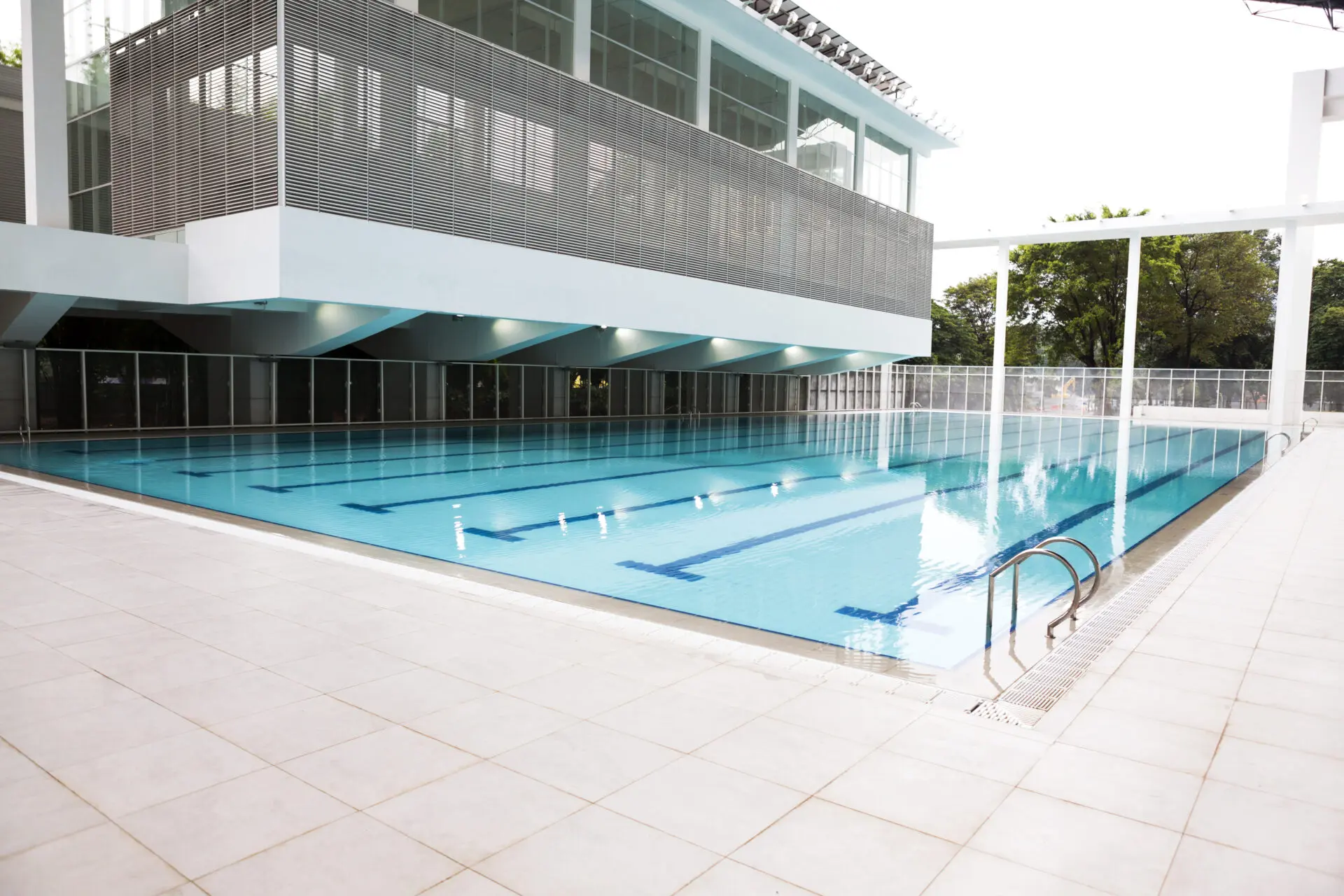Warm-up pools are widespread facilities in sports complexes for competitive events all over the world. They are essential facilities for the complete and correct development of aquatic competitions.
Dive deeper with the eBook
What is the purpose of a warm-up pool?
By definition, a warm-up pool, as the name suggests, is for athletes to prepare and warm up before starting their performance in an official aquatic competition, be it swimming, water polo, diving or artistic swimming.
A swimming pool of this type is usually found in sports complexes used exclusively for official competitions, as well as in high performance sports clubs where aquatic competitions are also held.
Depending on the location and also the characteristics of the warm-up pool, they can be used for much more than just swimming lessons or training practice.
In the case of sports clubs, depending on the characteristics of the warm-up pool, it can be used for much more once the competition is over. In the legacy phase these pools can have other uses more focused on recreational swimming or rehabilitation and muscle training sessions.
Characteristics of warm-up pools
Warm-up pools are primarily functional and must comply with the official rules and regulations of World Aquatics, formerly the International Swimming Federation (FINA), as set out in the Facilities Rules.
These pools must be able to make the most of space, so they have square or rectangular shapes, with totally standarised dimensions.
As far as swimming competitions are concerned, the measurements to comply with are a rectangular shape with a length of 50 or 25 metres and a minimum depth of 2 metres.
In the case of artistic swimming competitions, the official World Aquatics regulations establish that the warm-up pool for the practice of this sport must have a minimum surface area of 25 x 25 metres or 30 x 20 metres with a minimum depth of 3 metres.
Whereas for diving competitions, athletes warm up and practice in the same diving competition pool. Just like water polo competitions, where players warm up in the same pool.
As a warm-up pool is designed specifically for competitive training sessions before or during a competition. As such, they may include competition accessories such as starting blocks or podiums, lane lines and signaling for backstroke swimming, always complying with the same official regulations as Olympic and semi-Olympic pools.
Essential elements are the lane lines and lane width. The standard sizes stipulate a lane width of 2.5 metres. In addition, 0.20 metres must be left in the space between the wall and the waterline of the first lane, and between the last lane and the wall. This distance limits the possibilities of a possible domino effect on the swimmers. To delimit these lanes, the cork pads are used, placed by means of an anchoring system.
Structures such as podiums and starting platforms are also usually present, as the initial jump is one of the key moments in swimming, especially from a sporting point of view.
Obviously, signage in these pools must also be included, for the safety and optimal performance of the athletes. Such as false start signs, backstroke signs, timing systems and turning panels.
Regarding the temperature in swimming pools, the World Aquatics recommendations must be followed and maintained between 25 and 28ºC.
While in artistic swimming competitions, it is specified that the temperature must not be less than 27ºC. In water polo it is established between 25 and 27 ºC, and in diving it must not fall below 28 ºC.

Design recommendations
We have already mentioned that warm-up pools prioritise design in accordance with pre-established regulations, as they are rectangular or square training and heating spaces that must comply with absolutely exacting standards.
To this end, we can apply different construction techniques to achieve reliable and lasting results.
For example, we can use different materials in their construction, such as Skypool panels, modular stainless steel structures that allow us to design and build competition pools quickly, efficiently and accurately, meeting the strict tolerances demanded and tested by World Aquatics.
In addition, in the case of pools for temporary events, they can be easily dismantled at the end of the competition without the need for complex public works.
These panels are fully adaptable and adjustable with millimetre precision, guaranteeing the exact measurements required, as well as perfect watertightness. Their tolerance to seismic movements also makes them uniquely reliable and resistant.
Its excellent anti-rust protection thanks to the use of galvanised steel panels also translates into greater durability and safety over the years.
In terms of finishes and surface lining, PVC is usually recommended, especially when the installation is done with panel systems. As well as providing anti-slip properties to the pool deck area, where athletes walk on their way to dive into the water.
At Fluidra we have carried out a wide variety of warm-up pool projects in several countries, applying the specifications necessary for optimal use, but always adapting to the needs of each client.
